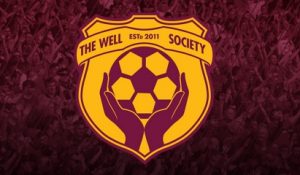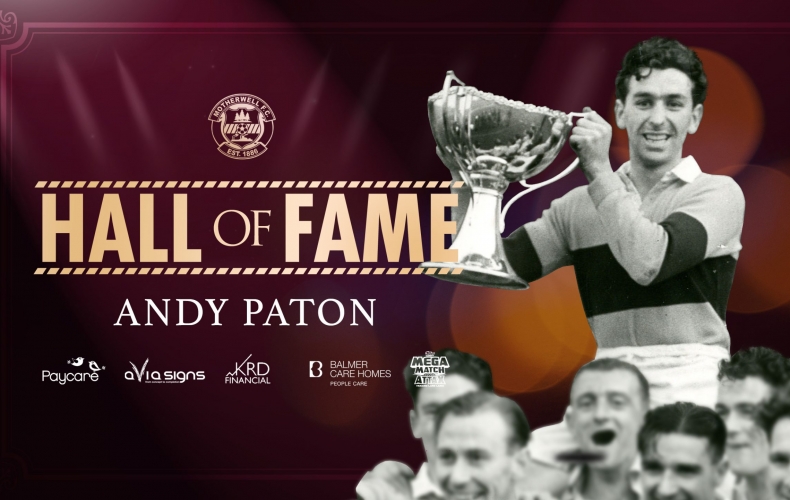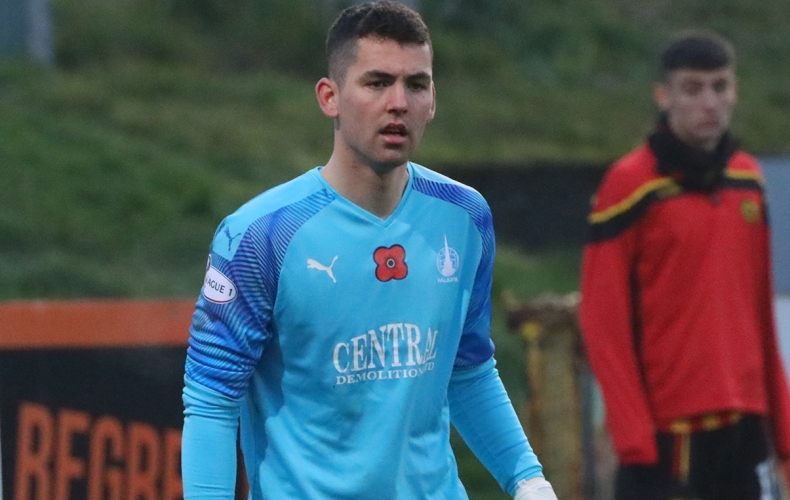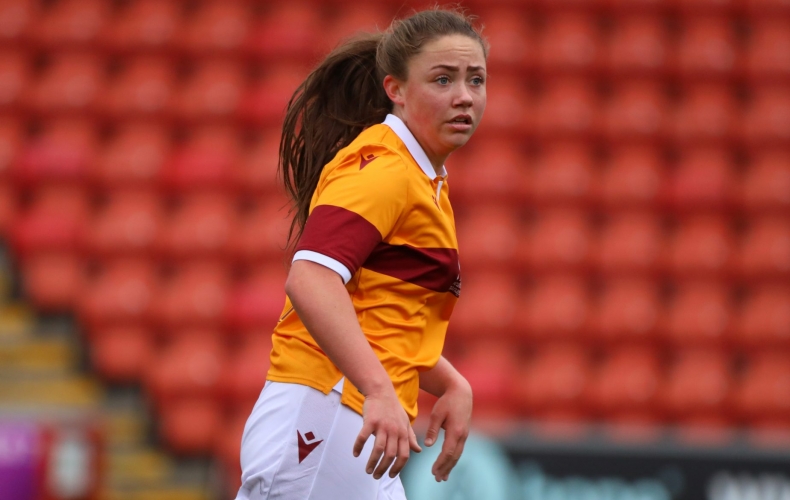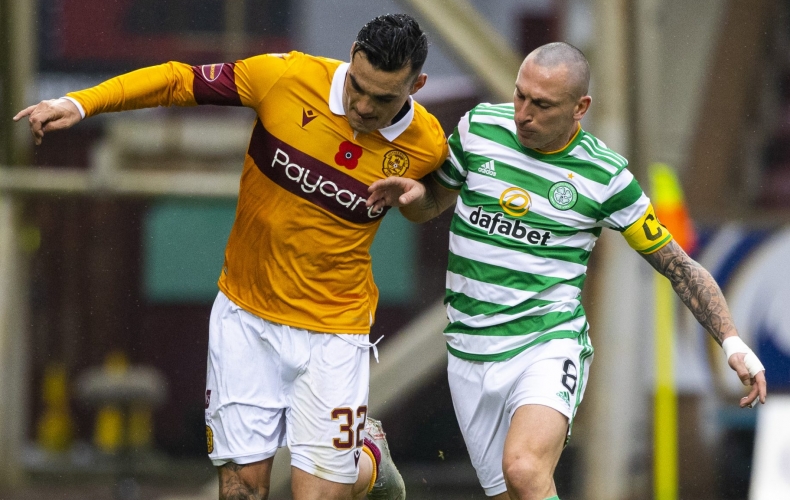Our second inductee to the Motherwell FC Hall of Fame in 2020 is Andy Paton.
The man who was previously voted as the club’s greatest-ever player joins John Hunter in this year’s intake.
We will honour the class of 2020 with a unique virtual induction event this winter by means of a special live, free-to-air, online event.
We are also once again asking the fans to pick our fifth inductee.
You can join in the vote by nominating any individual from any era in Motherwell’s past – player, manager or official – who you think is worthy of being included in the 2020 class.
Click here to vote for who you want to see in the Motherwell FC Hall of Fame.
“A footballing Prince amongst men” was how one enraptured newspaperman described Andy Paton in the immediate post-war years, as the multi-talented Ayrshire man emerged as one of the most cultured, yet commanding centre halves the Scottish game had ever known.
It’s perhaps stating the obvious to say that World War Two was a defining period for Motherwell FC. But football-wise it most certainly was.
Prior to the hostilities, ‘Well, with pretty much the same squad of players for the best part of a decade, had consistently challenge for honours in the Scottish game, playing a brand of football loved by fans up and down the land.
By the time the war had ended, John Hunter had been left with a threadbare playing staff, which he had used to some effect in the unofficial competitions during the 1939 to 1945 years.
Some big names in our history joined up with the club at this time, including goalkeeper Johnny Johnstone from Armadale, Willie Kilmarnock from Irvine Meadow, Willie Redpath from Polkemmet and Archie “Baldy” Shaw from Wishaw.
The biggest of them all though was Andy Paton from Kello Rovers.
Andy signed on the 6 November 1942 after a successful trial, impressing Hunter with his first touch and ability to read the game with consummate ease.
The Dreghorn-born defender had spent five years learning his trade in the junior ranks having made his debut for Irvine Meadow in 1937, aged just 14.
Because his family were specialist builders, young Andy was exempt for national service and that allowed him to develop and, in time, superbly marshal his local junior side, much to the admiration of the legendary Hunter.
Initially at Fir Park, he was somewhat impetuous and inclined to a display of bad temper, but he would mature into a beautifully balanced and reliable performer.
It was almost four years later that Paton made his official Steelmen debut against Rangers on 10 August 1946, after over 100 appearances in unofficial competitions. It wouldn’t be a happy occasion with the visitors notching up a 4-2 win.
By the time of that defeat in 1946, John Hunter had decided to leave his managerial duties and take up the important secretarial role at Fir Park.
It was decided by the board that George Stevenson would be entrusted with the manager’s job. This decision was greeted with joy by the Motherwell fans, given the previous service he’d given the club as a player.
His debut season had its share of ups and downs, but there was a feeling amongst the Fir Park faithful that there were signs during the campaign that the new signings would continue to improve over the coming years.
The end of the war had meant the league was no longer regionalised and suddenly for the first time, Paton had a national audience to entertain – and entertain he did.
Fans all over the country enjoyed not only Andy’s ability but his attitude to the game and his determination to give them their money’s worth. The new 1947/48 campaign kicked off with a home League Cup tie against Queen of the South, in which Paton became the first ‘Well player ever to wear the number five on his back, as the club introduced team numbers for the first time. It seemed to galvanise the Steelmen, who ran out comfortable 4-0 winners.
The league form was terrific from the outset with seven wins in the first eight games to go clear at the top of the league. With Paton superbly marshalling the defence, and the strike force of Wilson Humphries and Willie Watters on fire, a championship tilt was on the cards.
However, injuries to key players for the remainder of the season saw Motherwell slip, eventually finishing eighth, 19 points behind champions Hibernian.
An indifferent few seasons followed, including a number of near misses at the bottom of the table. The board were well aware of how close the club had come to relegation and made it clear things had to improve when they issued a statement that said that “to lose half of the total of the league games was not in the Motherwell tradition”.
Despite the determination of all concerned to improve the club’s fortunes, season 1949/50 would finish with Motherwell on the same 25 points total they had the previous campaign. 1950/51 saw no discernible improvement to our league placing, but happily, Paton became the first, and only, Motherwell captain to lift the League Cup to finally land our first-ever top-level silverware.
Our group section included Airdrie, Hearts and Partick Thistle. The Steelmen won five of the six games to progress to the quarter-final. Celtic were despatched with ease over the two legs, before coming out on top in a seven-goal thriller against Ayr United at Ibrox in the last four.
The final would be against champions’ elect Hibernian. The game apparently disappointed the neutrals in the ground as the build-up to the tie had indicated that the two best attacking teams of that era would be going at it toe to toe from the first whistle.
In reality, it appears that both teams seemed to cancel each other out somewhat until Archie Kelly struck to give the Fir Parkers the lead in front of the 64,000 fans. Two minutes later Jim Forrest swept home a cross and Willie Watters clinched the cup when he added a third near the end.
The League Cup victory whetted the appetite of all at Fir Park, and season 1951/52 would end in more success and immortality for 11 heroes in claret and amber.
In the league, Motherwell finished seventh, their best effort since the war, but the marginal improvement in that competition was overshadowed with the string of results the club managed in the 1952 Scottish Cup.
With Forfar Athletic and St Mirren beaten in the first two rounds, Dunfermline proved to be a tougher proposition, with a replay required to knock out the Fifers.
Rangers in the quarter-final also took the Steelmen to a replay, with Wilson Humphries driving home the winner at Fir Park.
The semi-final against Hearts would prove to be an epic, with no less than three games needed to at last despatch the Jambos. Cumulatively, almost half a million fans turned up to watch the tie finally put to be by Kelly, Humphries and Redpath in a 3-1 victory.
The final was a master class by manager Stevenson as his team produced a display of counter-attacking play rarely seen in that era. Despite Dundee having the lion share of possession, it was the Steelmen who had the pace and scoring prowess in front of a crowd just short of 140,000.
Goals from Watson, Redpath, Kelly and Humphries brought the famous old trophy back to Motherwell for the first time ever.
Andy Paton was a cornerstone of this Scottish Cup win, alongside the other seven “ever-presents” in the cup-ties. They were ‘keeper Johnstone, skipper Kilmarnock, half back Redpath, right winger Sloan, inside forwards Humphries and Kelly and left winger Aitkenhead.
After the cup successes of the previous two campaigns, everyone was upbeat about the progress the club were making on the pitch. Andy was by this time at the peak of his powers, and the success for Paton in claret and amber brought recognition from national selectors, gaining a rather meagre nine caps in total.
In truth, it was a poor return for a player who displayed such anticipation which bordered on being clairvoyant, along with sublime ball control and dribbling ability that belied his centre half status.
The start to 1952/53 campaign brought a red-letter day for Andy. Occasionally his adventurous habit of dribbling the ball away from dangerous situations caused palpitations among Motherwell fans, but they loved him for the thrills he bestowed and talked for decades about such exploits.
One such mazy resulted in his one and only goal for the Steelmen, at home to Rangers in a 3-3 League Cup draw on 27 August 1952.
Sadly, the season would end in calamitous fashion with Motherwell being relegated to Division B. Thankfully, the team bounced back at the first attempt in spectacular style, scoring 109 goals in the 30 games bringing Andy, and the club, back to the level where they belonged.
By the time the summer of 1958 arrived with a new Motherwell boss, Bobby Ancell installed, and the new incumbent going down the road of developing the Ancell “Babes”,
Andy was allowed to leave Fir Park for Hamilton Academical. He played for a full season before taking over as manager at Douglas Park, where he remained for a further nine years, including masterminding a famous championship win for the Accies.
He was, without doubt, a player before his time. These days, his footballing ability would be far better appreciated than it was during his career. Indeed, in 2007 Andy Paton was voted by fans as Motherwell FC’s best-ever player, and that’s an accolade that will never be taken away from the original Motherwell maverick.
Andy may not have been the biggest of defenders, measuring 5ft 10in tall. But without doubt he was one of the best, and fiercest tacklers ever to wear our famous colours. He had an uncompromising streak that the fans in the Hunter Stand today would have absolutely loved.
The Motherwell legend passed away at his home in Markinch in February 2014 at the grand old age of 91, having the distinction of being Scotland’s oldest football internationalist at the time. He may not be amongst us anymore, but no Motherwell fan reading this should ever forget his contribution to our fantastic club.
Andy Paton. The greatest ever Steelman.









